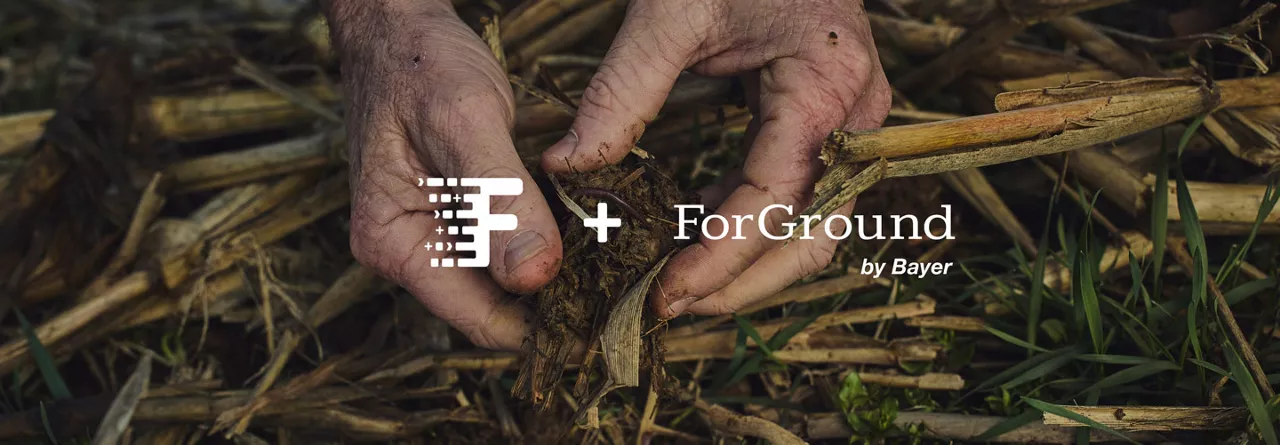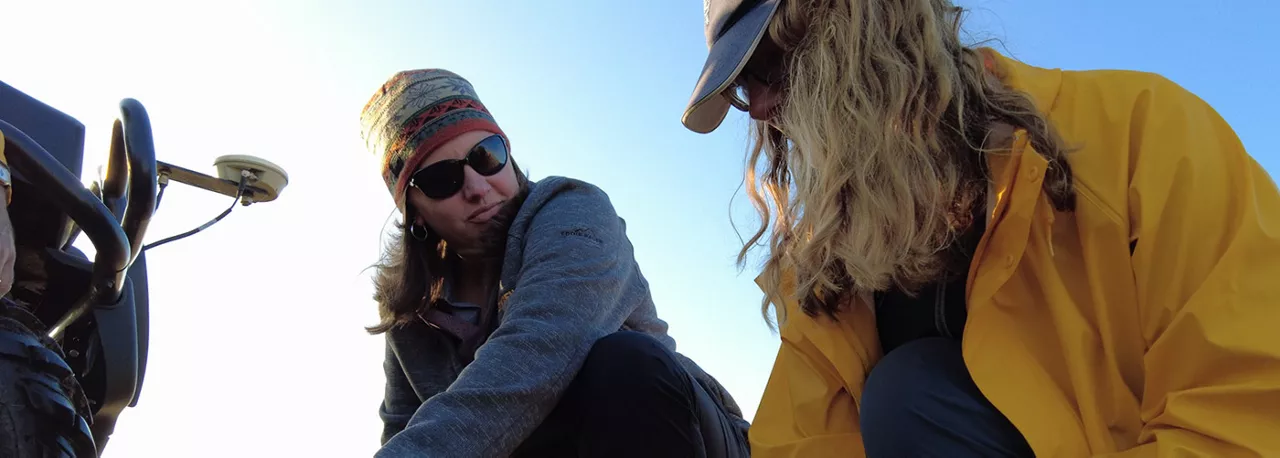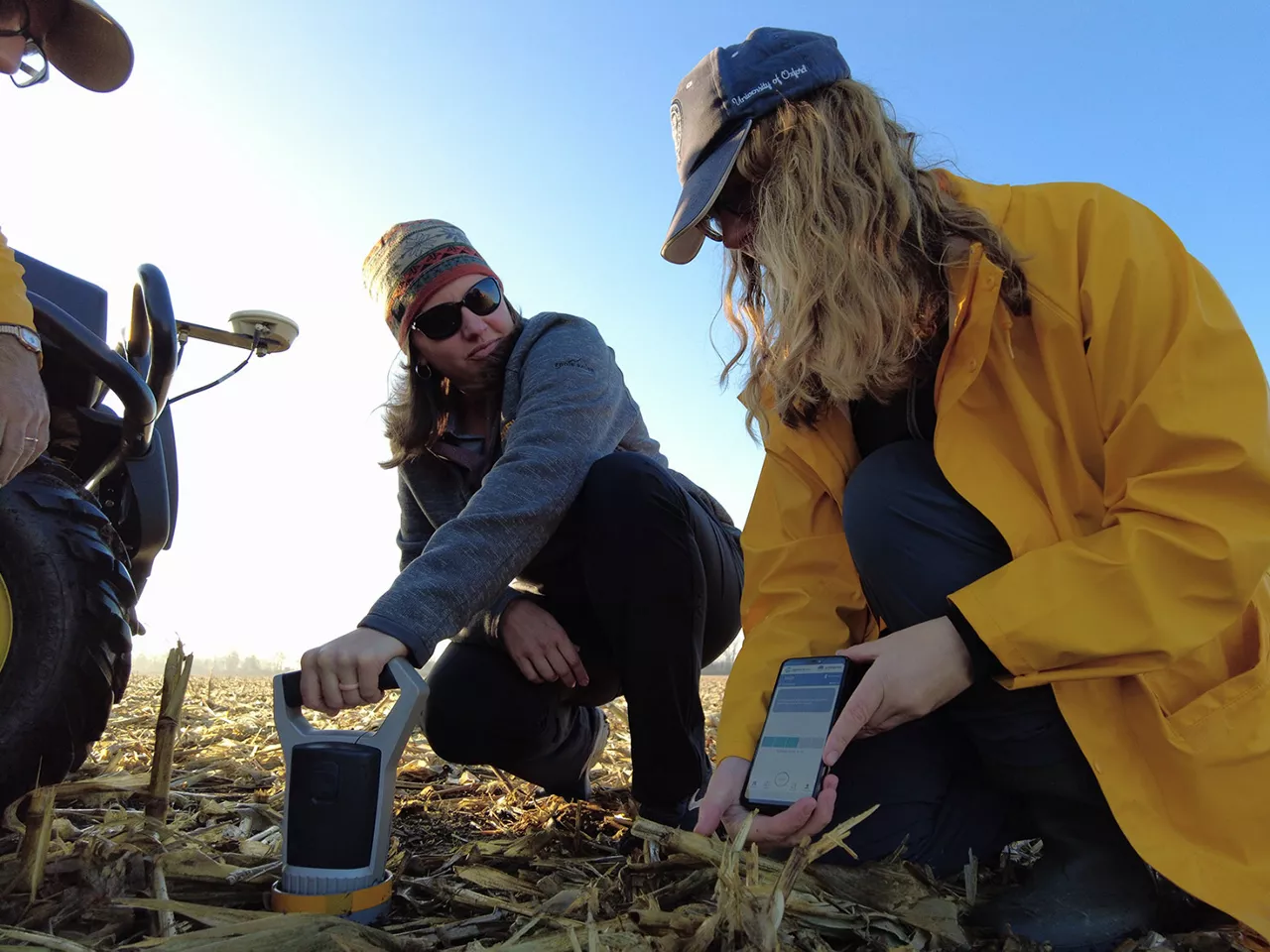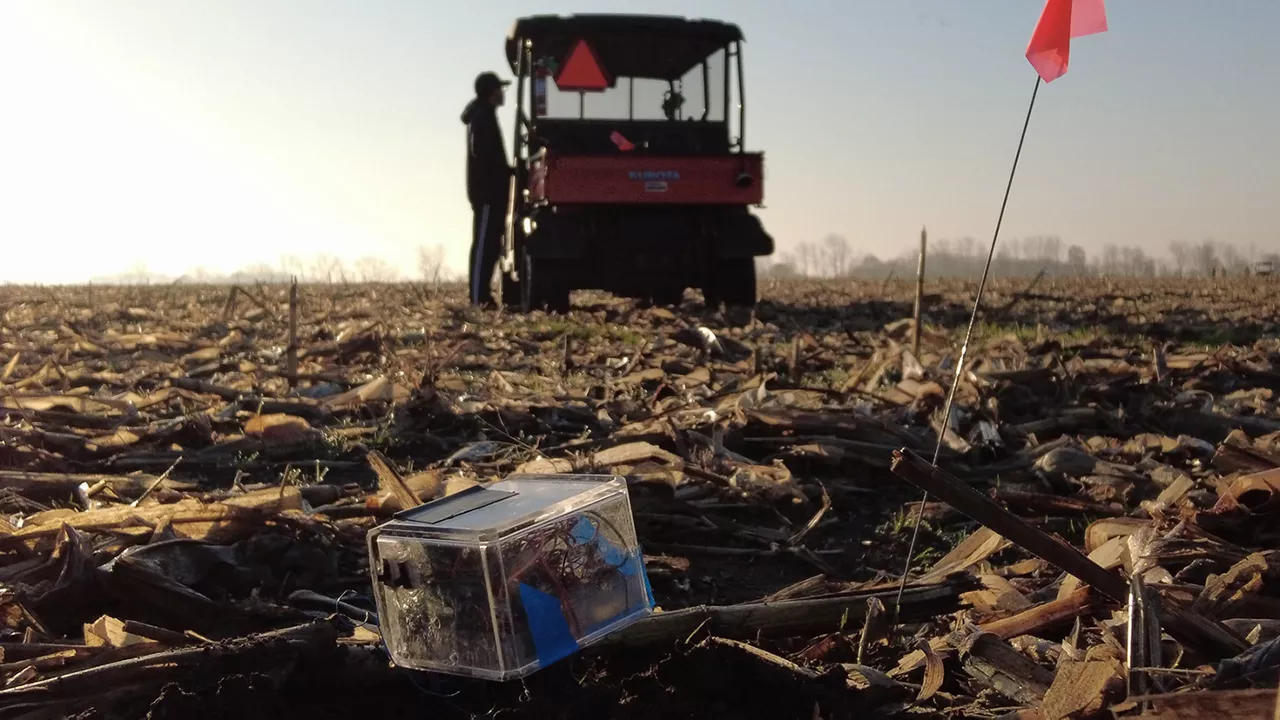
The Offseason Advantage: Finding Profits Post-Harvest with FieldView and ForGround
Here’s a look at how FieldView and ForGround by Bayer work hand-in-hand to help growers tap into potential revenue streams from carbon farming.
2022 CarbonStock Grants4Tech challenge, an annual external Bayer program designed to foster innovation, this year focusing on the science of carbon

How easy is it to quantify the amount of soil organic carbon (SOC) stored in a field? This is the essential question posed by the 2022 CarbonStock Grants4Tech challenge, an annual external Bayer program designed to foster innovation, this year focusing on the science of carbon.
If a farmer wants to understand a field’s SOC level today, they need to collect soil samples at multiple points throughout the field and send those to a laboratory for expensive and time-consuming analysis.
This approach to SOC quantification just isn’t scalable or sustainable in ways that will quickly and accurately quantify improvements in soil carbon as we work toward widespread adoption of carbon-smart farming practices, and to the generation of revenue for farmers around the world. Both aspects are critical to programs like ForGround by Bayer.
How can we help farmers quantify SOC at scale, with fewer in-field samples taken? When we shared this challenge in March 2022, which offers a maximum award of 40,000€, a total of 13 teams sent in their applications for participation, including descriptions of their proposed approaches and technologies leveraged. From those applications an internal Bayer jury selected 6 finalists: Chrysalabs of Montreal, Quebec, Canada; ConstellR of Freiburg, Germany; i-SOC of the University of Utah; SoilCastor of Wageningen, The Netherlands; SoilOptix of Tavistock, Ontario, Canada; and Yardstick of Oakland, California, USA. Two European, two American, and two Canadian teams.

Digital Ecosystem Services Lead Kelly Gillespie gets a firsthand demo from the SoilCastor team of their approach to SOC quantification in the November trials.
The finalist teams were given until the first week of November to prepare their approaches for the in-field SOC quantification trials. Convening in Chicago, the teams traveled to four fields in the Midwestern US from November 1-3, 2022. The field coordinates were shared with each team 30 minutes prior to arrival, upon which the teams had three hours to take necessary measurements to quantify that field’s SOC.
As we expected and hoped, our finalist teams leveraged disparate technologies to quantify SOC:

The approach to quantification from the University of Utah i-SOC team differed from the other teams and included soil microorganism measurement in their SOC calculations.
Team performance was evaluated according to two main criteria: scalability and accuracy compared to reference measurements.
We established accuracy by requiring each team to measure a field’s total carbon stock, as well as for three specific locations, compared to a reference baseline. Smaller deviations from our baseline were awarded more points in this category.
The scalability for each team’s approach relied on time taken to make measurements and number of soil samples needed to calibrate a model. Every soil sample sent to the lab cost a team points, and every team decided separately on their sample taking strategy.
Strategies for measurement ranged from zero to six field samples, and from direct soil measurements to spectroscopic, satellite-based imagery. What was really interesting was the high accuracy of the measurements. There were differences and the highest accuracy came from teams using spectroscopic measurements (Chrysalabs, SoilCastor, and Yardstick).
Considering every team’s high degree of accuracy, the strategies employed by each team to take samples determined the competition winners. And despite the competition winners, it’s important to note that varying strategies can all have significant impacts in improving the overall effectiveness of soil carbon measurements in agriculture and beyond.
SoilCastor was our CarbonStock winner this year! Their team established sufficiently high accuracy across sites without taking any samples. Team i-SOC came out in second place with lower accuracy and slower in-field speed, but a winning strategy of no sample-taking. ConstellR scored best regarding scalability with their satellite-based technology, but lost points in accuracy and came out in third place.
The three days in the field returned great insights in the capabilities of innovative technologies to measure SOC in the field. Despite the final rankings, no team had what we would call poor accuracy, which made the sampling strategy the deciding factor on the top three of the competition.
This year’s CarbonStock Grants4Tech program is a big step forward as the scientific community expand its ability to accurately determine the carbon stock of a field without requiring lab testing. Truly an inspiring and exciting challenge that highlighted some of the best emerging technologies in soil carbon measurement.